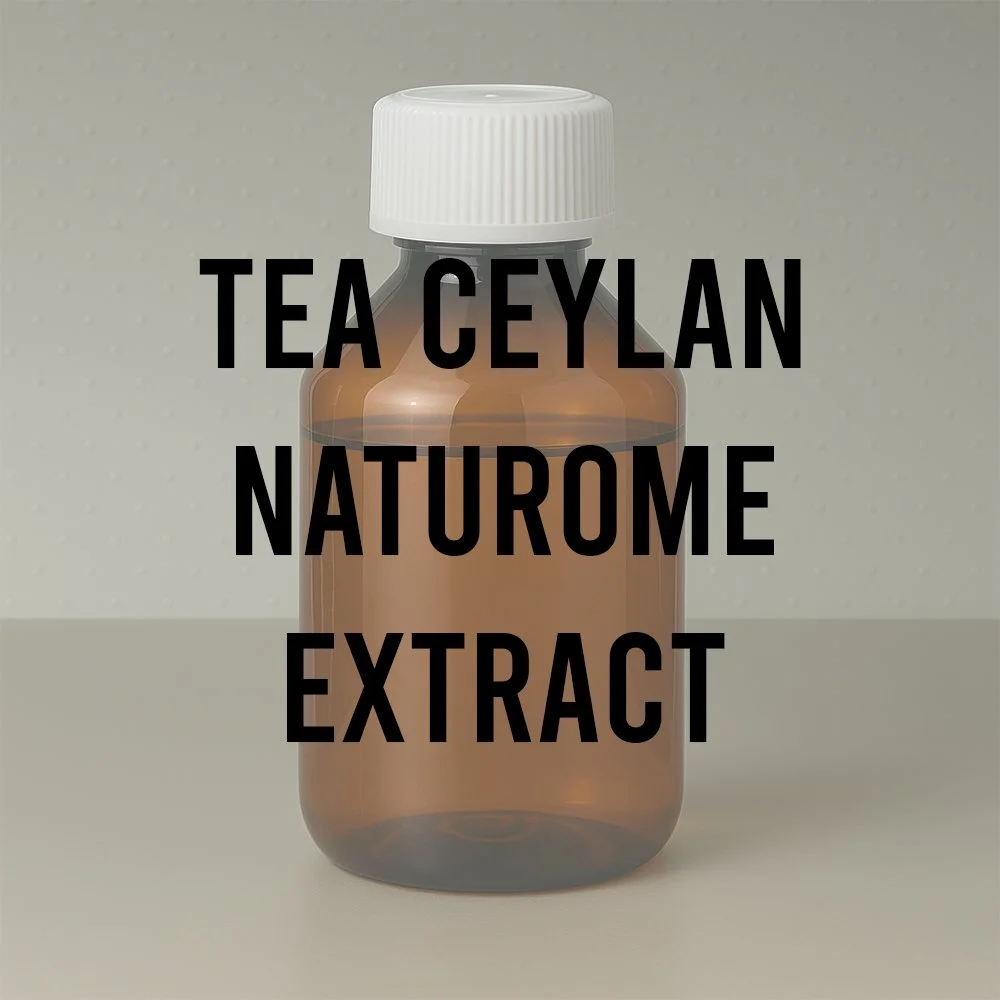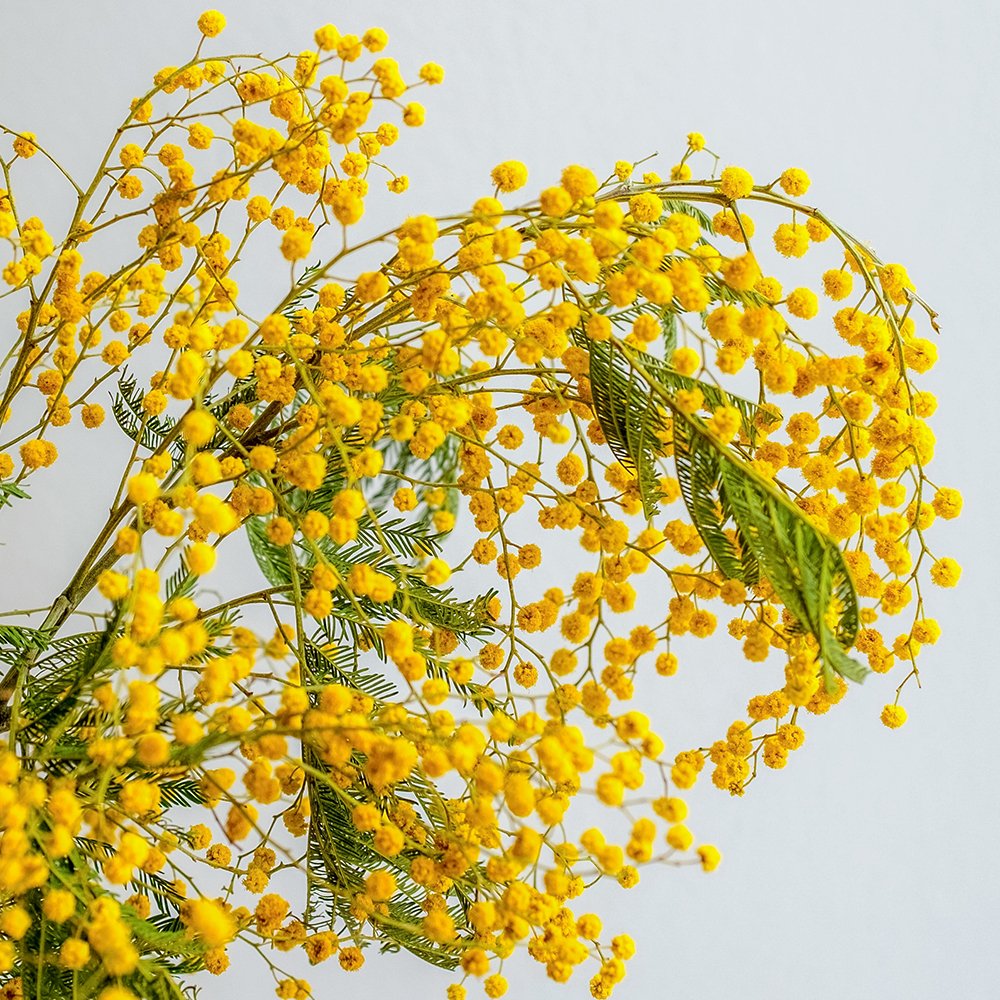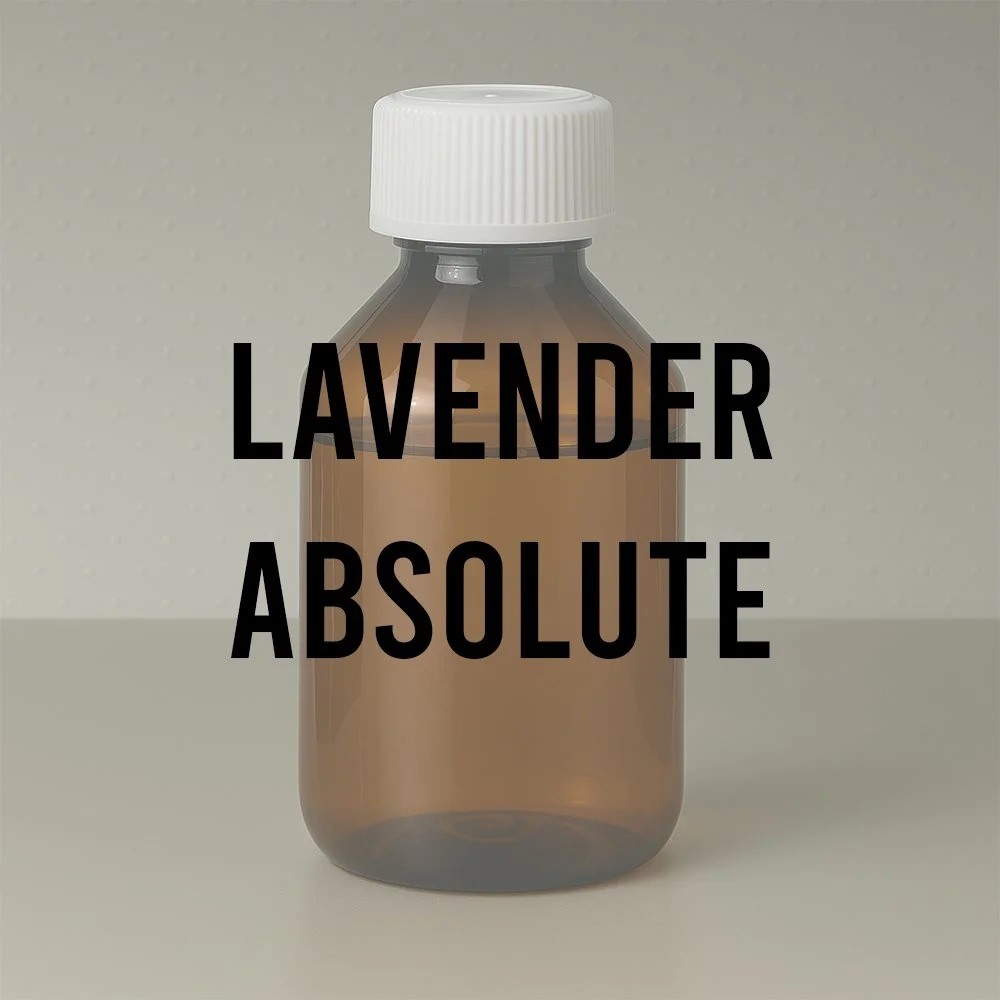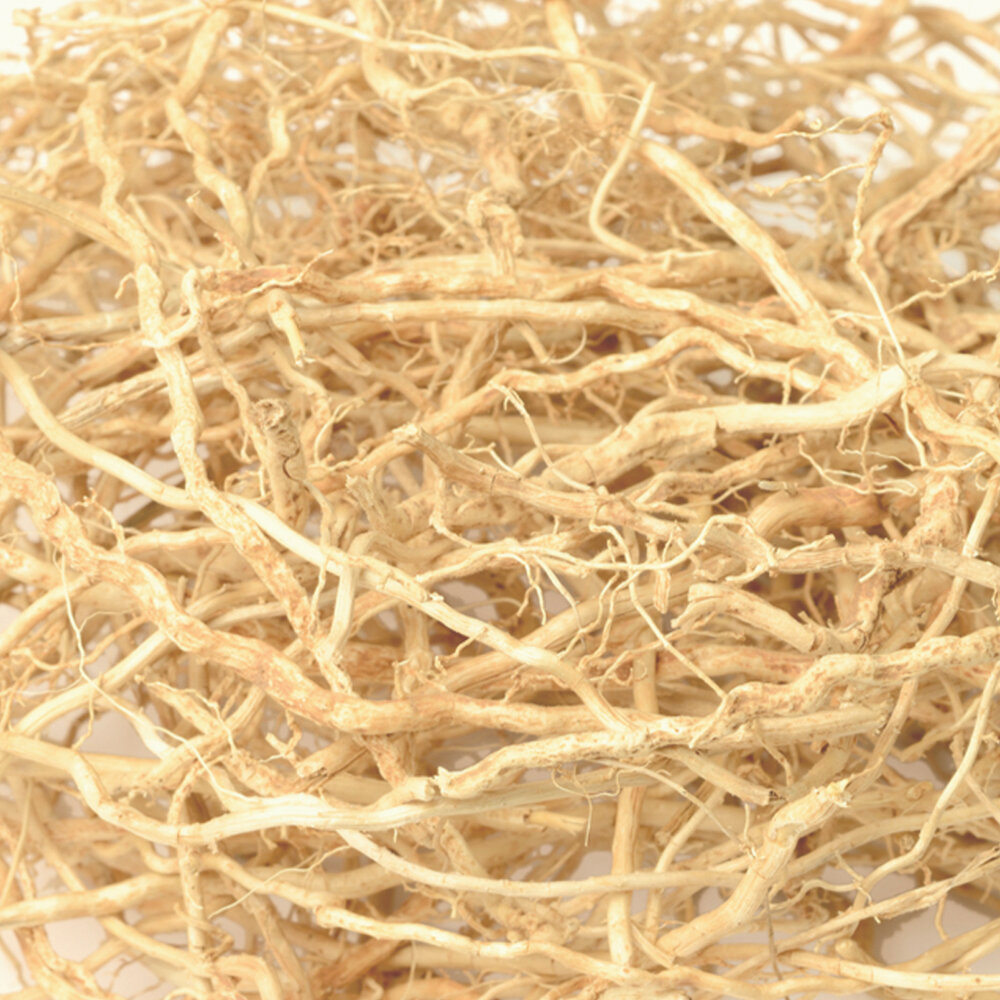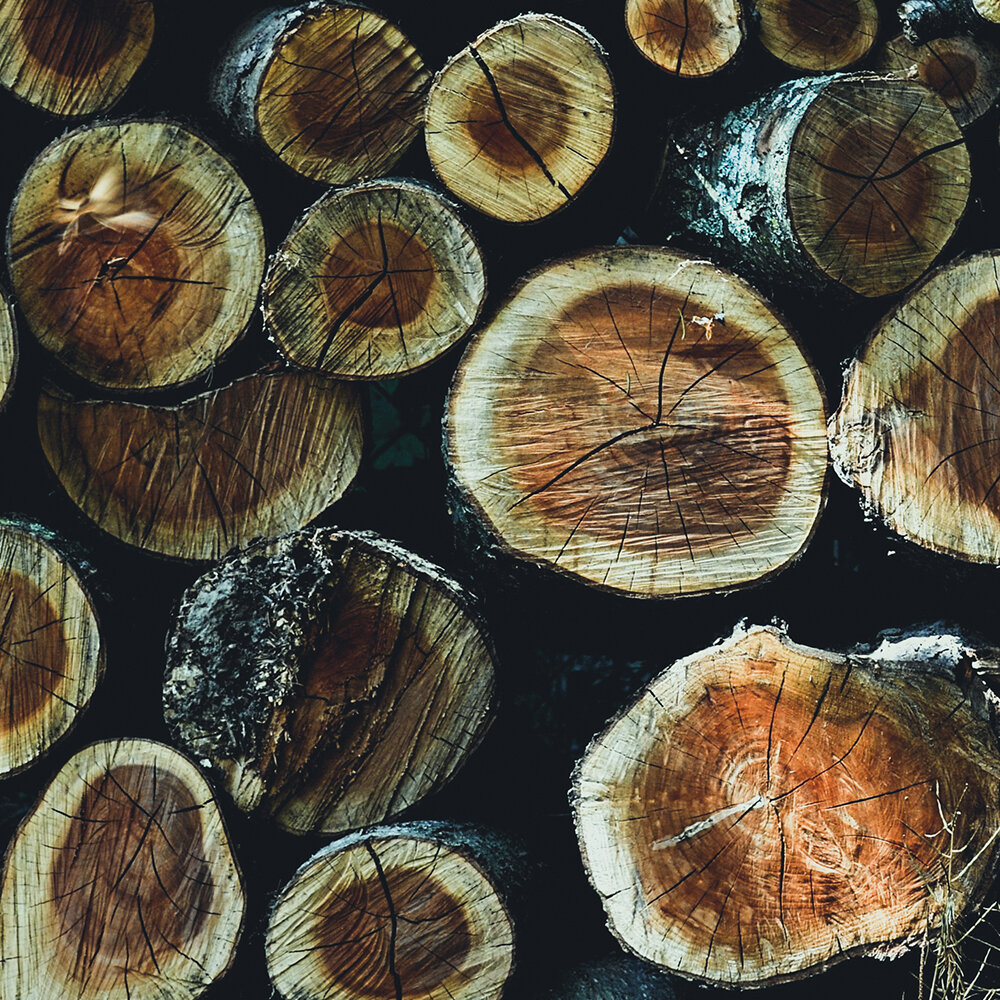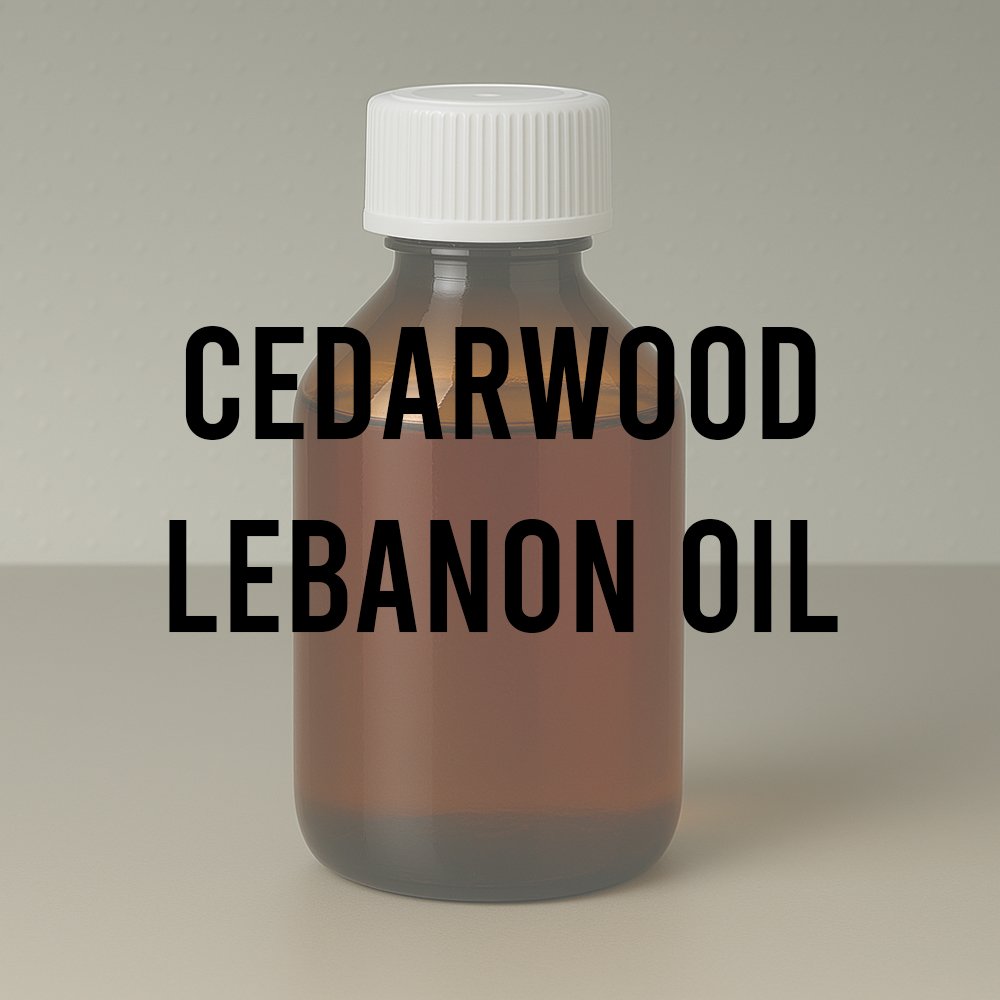TEa Ceylan Naturome Extract Technical Ingredient Overview
🔎 Chemical Name — Tea extract (Camellia sinensis leaf extract)
🧪 Synonyms — Black tea extract, Ceylon tea extract, Tea polyphenols, Camellia sinensis extract
📂 CAS Number — 84650-60-2
📘 FEMA Number — Not assigned (natural extract, not FEMA GRAS listed as individual flavoring substance)
⚖️ Molecular Weight — Variable (complex natural extract)
📝 Odor Type — Herbaceous, tea-like
📈 Odor Strength — Medium to strong
👃🏼 Odor Profile — Warm, herbaceous, dry-sweet tea character with subtle leathery, nutty, and hay-like nuances. Authentic black tea infusion profile with woody undertones and delicate fermented notes
⚗️ Uses — Fine fragrance (tea accords, woody compositions, aldehydic perfumes), flavor applications, functional fragrance
🧴 Appearance — Dark brown to amber-colored liquid or semi-solid extract
What is TEA CEYLAN EXTR NATUROME?
TEA CEYLAN EXTR NATUROME is a natural aromatic extract obtained from the processed leaves of Camellia sinensis, specifically Ceylon (Sri Lankan) black tea varieties. This material is part of Firmenich's NATURALSTOGETHER® collection and represents an authentic olfactory profile of Ceylon tea, capturing the characteristic warm, herbaceous, and subtly fermented aroma of high-quality black tea.
The extract is derived from tea leaves that undergo traditional processing methods including withering, rolling, fermentation (oxidation), and drying before solvent extraction. This complex processing creates the distinctive black tea character through enzymatic and non-enzymatic reactions that generate the volatile compounds responsible for the tea's signature aroma (Xiao et al., 2022).
Historical Background
Camellia sinensis is native to China, with tea cultivation dating back over 5,000 years (Bon Parfumeur, 2023). The plant was introduced to Ceylon (modern-day Sri Lanka) during British colonial rule in the 19th century, where it flourished in the mountainous regions of Northern and Central Sri Lanka. Ceylon teas, particularly Orange Pekoe varieties, gained international recognition for their distinctive quality and aromatic profile.
The use of tea extracts in perfumery has historical precedent documented by Arctander, who noted that tea leaf absolutes and distilled products (anhydrols, resinoides incolores) were produced in France and the United States through hydrocarbon solvent extraction methods. Arctander described these materials as having "a faint, but rich and delicately dry, somewhat herbaceous, yet sweet and woody odor" that becomes "slightly reminiscent of the odor of dry and cured tealeaves" upon dilution (Arctander, 1960).
Firmenich's sourcing partners work with small cooperatives and independent farmers in Sri Lanka's mountainous tea-growing regions, where leaves are hand-picked every morning before the sun reaches its zenith, maintaining traditional harvesting practices that ensure optimal quality (Firmenich, 2025).
Olfactory Profile
Scent Family
Herbaceous-Woody, Tea subfamily
Main Descriptors
The olfactory profile exhibits a complex, authentic black tea character with multiple facets:
Primary notes: Warm, herbaceous, dry-sweet tea infusion
Secondary notes: Leathery, nutty, hay-like nuances. Woody undertones with subtle fermented aspects
Research indicates that methyl salicylate serves as the most definitive odor contributor in Ceylon tea, distinguishing it from other tea varieties such as Assam, Keemun, and Darjeeling (Yang et al., 2023). Additional characteristic volatile compounds include geraniol, linalool, linalool oxides, β-ionone, and phenylethyl alcohol, which collectively create the floral-sweet complexity typical of quality black teas.
Intensity
Medium to strong odor strength with good diffusion. The extract displays substantial tenacity due to its complex composition of less volatile sesquiterpenes and phenolic compounds.
Tenacity
Excellent persistence, functioning effectively as a fixative component. The material demonstrates good staying power characteristic of tea absolutes, with Arctander noting their particular value "as an intensifier of clary sage, melaleuca bracteata, michelia leaf oil, or other tea-like fragrances" where it is "unsurpassed in naturalness" (Arctander, 1960).
Volatility
Base to middle note behavior. While tea extracts contain some volatile top note components (monoterpenes, light aldehydes), the predominant character resides in the middle-to-base range, with woody-ambery aspects providing substantive dry-down notes.
Fixative Role
Tea extracts possess recognized fixative properties, with black tea absolute noted for its "excellent fixative properties with a leather dry down" (Providence Perfume Co., 2025). The material can help extend and stabilize more volatile fragrance components while contributing its characteristic aromatic signature.
Applications in Fine Fragrance
Tea extracts find application in multiple fragrance families and accords. Arctander identified their use "to produce sweet-herbaceous notes in certain floral perfumes, e.g. jasmin, orange blossom, gardenia, sweet pea, freesia, and to produce new effects in woody or aldehydic perfumes of non-floral type" (Arctander, 1960).
Key applications include:
Tea accords: Creating authentic tea impressions in modern fragrances
Woody-aldehydic compositions: Adding depth and natural character
Floral fragrances: Contributing herbaceous-green facets to white florals
Chypre structures: Providing dry, sophisticated undertones
The material pairs effectively with sage derivatives, aromatic herbs, woody bases, and floral absolutes. It can add freshness to floral or fruity compositions while enhancing the woody or earthy dimension of masculine fragrances (Bon Parfumeur, 2023).
Performance in Formula
Ceylon tea extract demonstrates good stability and blending properties. The material integrates well into both alcohol-based and oil-based formulations. Its complex composition allows it to bridge multiple fragrance families, functioning as a modifier that adds natural authenticity and depth to synthetic bases.
The extract's fixative character helps anchor more volatile components while its distinctive tea profile remains perceptible through the fragrance development. When used judiciously (typically 0.1-2% in compound), it contributes recognizable tea character without dominating the composition.
Industrial & Technical Uses
Beyond fine fragrance, tea extracts (CAS 84650-60-2) find application in:
Flavor industry: Beverage formulations, confectionery, baked goods
Cosmetics: Skincare products leveraging antioxidant properties from polyphenols and catechins
Functional products: Nutraceuticals and dietary supplements due to health-associated compounds (EGCG, catechins, L-theanine)
The extract's rich content of bioactive compounds, primarily polyphenols, flavonoids, and catechins, provides antioxidant, anti-inflammatory, and antimicrobial properties valuable in cosmetic applications (CymitQuimica, 2019).
Regulatory & Safety Overview
IFRA Status
No specific IFRA restrictions identified for tea extracts (CAS 84650-60-2) as of Amendment 51. The material is generally recognized as safe for use in fragrance applications at appropriate concentrations. Formulators should verify current IFRA standards and conduct appropriate safety assessments for specific applications.
EU Cosmetics Regulation
Tea extracts are permitted for use in cosmetic products under EU Regulation 1223/2009. The material is widely used in skincare formulations and is listed in the EU CosIng database.
FEMA Status
While Camellia sinensis leaf material is recognized for food use, the specific solvent-extracted absolute under CAS 84650-60-2 does not carry a distinct FEMA GRAS number. Tea flavor materials used in food applications must comply with relevant food safety regulations.
Toxicology
Tea extracts have an extensive history of safe use in food, beverage, and cosmetic applications. The primary bioactive compounds (catechins, polyphenols) are well-characterized and generally recognized as safe. Standard good manufacturing practices and appropriate usage levels ensure safe application in fragranced consumer products.
References
Arctander, S. (1960). Perfume and flavor materials of natural origin. Allured Publishing Corporation.
Bon Parfumeur. (2023, July 21). Tea in perfumery. Bon Parfumeur Journal. Retrieved from https://www.bonparfumeur.com/blogs/journal/tea-in-perfumery
CymitQuimica. (2019, February 15). CAS 84650-60-2: Tea extract. Retrieved from https://cymitquimica.com/cas/84650-60-2/
Firmenich. (2025). TEA CEYLAN EXTR NATUROME [Product information]. Retrieved from https://www.firmenich.com/zh-hans/product/tea-ceylan-extr-naturome-fl-987518
Providence Perfume Co. (2025). Black tea absolute [Product description]. Retrieved from https://www.providenceperfume.com/products/black-tea-absolute
Xiao, Y., et al. (2022). Comparative analysis of volatile compounds in Chinese top three black teas. Food Chemistry, Article details in original research.
Yang, Y., et al. (2023). The chemistry, sensory properties and health benefits of aroma compounds of black tea produced by Camellia sinensis and Camellia assamica. Foods, 9(12), 1253. https://doi.org/10.3390/foods9121253

